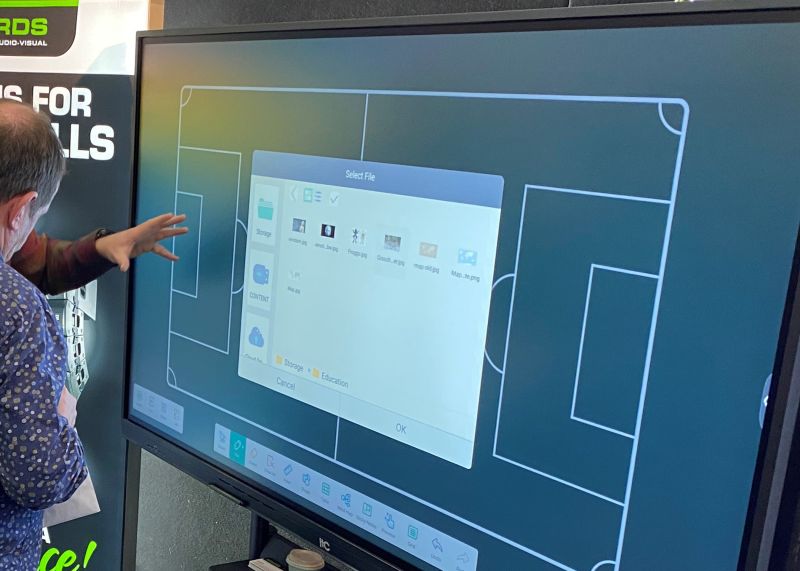
Image supplied by Edwards
<p>Most schools now incorporate some form of technology into their school day. Secondary schools usually have a BYOD policy or supply students with devices. Even primary schools see their students benefitting from computer lab time, learning essential skills on programmes like word processors, digital spreadsheets and slide-show presentations.</p>
<p><a href="https://www.schoolnews.co.nz/latest-print-issue/" target="_blank" rel="noopener"><strong>Read the latest print edition of <em>School News</em> HERE</strong></a></p>
<p>Many educators are familiar with the multitude of skills these technologies can develop. Cloud-based software can encourage collaboration, and the real-time feedback that some teachers employ using these programmes mean that students learn faster than before. The interactivity of online lessons also presents an engaging interface for students, and multimedia formats can enrich learning. </p>
<p>For educators looking for other ways to engage their students with technology away from personal devices, touch tables and teaching stations may be useful. This technology enables multiple students to interact with the same digital interface, promoting collaboration, discussion and teamwork. These stations can be used to brainstorm ideas, group problem-solve and more. </p>
<p>Similar collaborative technological tools for the classroom include touchscreens and interactive projectors, which ākonga of all ages can enjoy. These technologies expand the possibilities of teaching by engaging students not just mentally, but physically. Moving around to answer questions and interact with course material ensures improved engagement, especially for those who need additional stimulation in class. </p>
<p>Educators looking to expand their technological practices in the classroom can find advice and professional learning and development with certain Edutech providers. For those looking to go the extra mile for student engagement and achievement, an investment into classroom technology may be the answer.</p>
<figure id="attachment_31823" aria-describedby="caption-attachment-31823" style="width: 552px" class="wp-caption aligncenter"><img class=" wp-image-31823" src="https://www.schoolnews.co.nz/wp-content/uploads/2024/09/SN66-TECH-Classroom-technology-trends-Edwards-1.jpg" alt="Classroom technology" width="552" height="394" /><figcaption id="caption-attachment-31823" class="wp-caption-text">Image supplied by Edwards</figcaption></figure>
<p>According to <a href="https://www.edwardsnz.co.nz/" target="_blank" rel="noopener">Jonathan Neil from Edwards</a>: “The latest generation of Interactive TV technology is a significant choice, particularly as your older projector-based solutions are due for replacement. Projectors have limitations such as dim lighting conditions, lamp life, limited resolution, and the need for regular maintenance, whereas interactive TV panels offer brighter and crisper visuals. They require little or no maintenance and provide a more reliable and durable solution.”</p>
<p>Mr Edwards encouraged schools to take advantage of this new technology and the opportunity to upgrade their outdated systems, and provide students with a cutting-edge learning environment. “This new generation of panels delivers on what the last fell short on and really will facilitate collaborative learning in the classroom.</p>
<p> “With multiple touch points, students can collaborate in real-time, working together on projects, problem-solving activities, and presentations, or it can be used as a gigantic whiteboard. The high-res 4K display brings content and videos to life; more realistic and engaging. The responsive touch-screen functionality allows students to actively interact with the content, enabling them to manipulate, annotate, and explore in a hands-on manner. </p>
<p>“Visually appealing and captivating for students it’s like a giant iPad in a package we all intuitively understand how to use.”</p>

EXCLUSIVE: Teachers used to be paid two to three times more than minimum wage workers,…
After an “overwhelming” vote to reject the latest Government offer, secondary school teachers will begin…
Second-language learning should be compulsory, says a new report from a forum bringing together academics,…
A new entitlement aimed to improve access to learning support coordinators for schools with students…
Educators have raised questions about the Ministry of Education’s new secondary school subjects, set to…
Professional learning and development (PLD) for teachers needs to be higher impact for teachers and…
This website uses cookies.